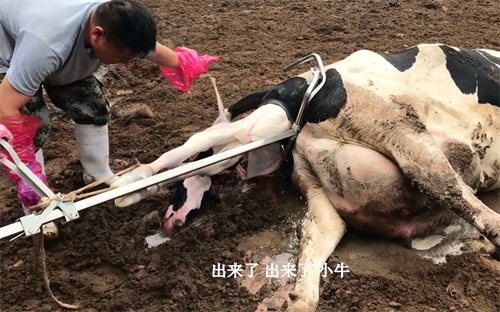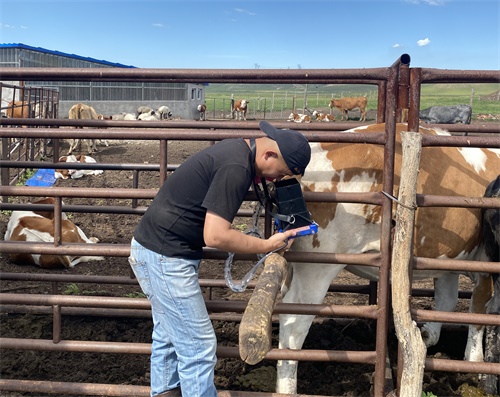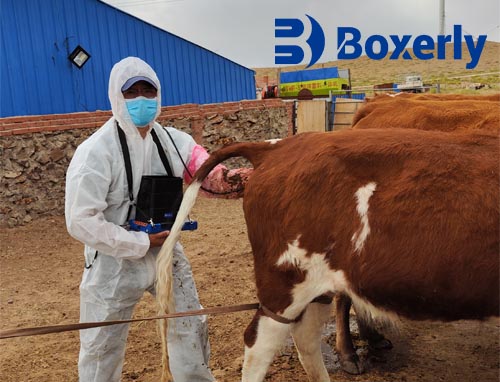As sheep farming becomes more science-driven and globally competitive, technologies like portable ultrasound are transforming the way farmers monitor embryo development. From early pregnancy confirmation to real-time fetal monitoring, Portable Ultrasound Scanners have become invaluable tools on sheep farms—not only in large-scale commercial settings but also on small, family-run operations.

What makes this technology even more attractive is its accessibility: devices are getting lighter, more durable, and easier to operate, allowing even non-specialist farmers to get clear, actionable insights about what’s happening inside the ewe’s reproductive tract. For those focusing on embryo transfer (ET) or optimizing lambing success, using portable ultrasound during critical embryo development periods has become standard practice in many countries.
Why Farmers Are Embracing Portable Ultrasound for Embryo Monitoring
Veterinarians and farmers from Australia to the UK and across the US have come to rely on portable ultrasound to assess embryo viability and development. Traditionally, palpation or hormone level monitoring were the primary methods used, but they offered limited accuracy and often required more time or stress for the animals. With a quality portable ultrasound, a quick scan through the ewe’s abdomen or rectum provides instant feedback on the presence, number, and condition of embryos.
Non-invasive, stress-free, and fast—these three traits have made portable ultrasound particularly appealing for sheep producers. The technology offers the ability to:
Confirm pregnancy as early as 25 to 30 days post-breeding
Detect multiple embryos (twins or triplets)
Monitor embryo growth through critical stages
Identify signs of embryonic loss, infection, or developmental delay
These insights help farmers make timely decisions, whether it’s separating pregnant ewes, adjusting nutrition, or planning labor and veterinary support around lambing time.
Key Monitoring Periods in Sheep Embryo Development
Understanding when and how to use ultrasound during embryo development matters. The embryo journey inside the ewe follows a predictable path, and using ultrasound at key milestones can greatly improve outcomes.
Day 20–30: Early Pregnancy Confirmation
At around three weeks after mating or embryo transfer, skilled ultrasound users can detect fluid-filled uterine sacs and sometimes even the embryo itself. This is typically done using a 5–7.5 MHz transabdominal probe with the ewe in a standing or gently restrained position. Confirmation at this stage helps avoid unnecessary feeding and management costs for non-pregnant ewes.
Day 35–45: Fetal Heartbeat and Viability Check
Around the fifth week of gestation, the heartbeat of the embryo becomes visible on B-mode ultrasound. This is a crucial indicator of fetal viability. Many veterinarians in the US and New Zealand schedule their checks around this period, especially after embryo transfer procedures, to ensure successful implantation.
Day 60–80: Development Assessment and Growth Trends
This window allows for detailed observation of the fetus’s structural growth, such as skull, spine, and limb formation. Farmers looking to evaluate embryonic health or detect delayed growth can benefit greatly from scans during this period. Some progressive farms in Germany and the Netherlands even use ultrasound findings to adjust feed composition, boosting fetal growth while minimizing complications during lambing.
Day 100–140: Pre-Lambing Readiness Check
In late pregnancy, ultrasound is used more cautiously but still provides insights into fetal size, position, and movement. This is especially useful when dealing with older ewes or those with prior lambing difficulties. Ensuring that fetal positioning is favorable for natural birth can reduce emergency interventions and losses during lambing.
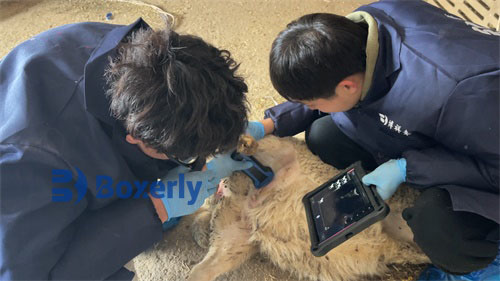
Portable Ultrasound: What Makes It Practical on the Farm?
Unlike bulky clinic machines, portable ultrasounds like the BXL-V50 are designed with farm use in mind. These systems are typically:
Battery-operated, offering 7+ hours of working time
Dustproof and waterproof, suitable for tough outdoor conditions
Equipped with transducers that are optimized for reproductive imaging
Lightweight and easy to carry around the barn or pasture
Farmers in the UK, particularly those managing hill sheep, praise the mobility and ease of use of such machines. A single person can operate them without needing a full veterinary setup. The rugged casing and sun visors on newer models also mean scanning is possible even in less-than-ideal lighting conditions.
The Human Side: How Portable Ultrasound Changes Daily Life on the Farm
Beyond numbers and efficiency, ultrasound technology changes the relationship farmers have with their animals. A sheep producer in Montana recently shared how using ultrasound helped him detect a triplet pregnancy in a ewe that previously aborted. With tailored nutrition and careful monitoring, she delivered all three lambs successfully.
This kind of hands-on, proactive care wouldn't be possible without real-time visuals. It allows for more empathy-based decisions, reducing blanket treatments and focusing on each ewe’s individual needs. Similarly, a cooperative in Spain reported significantly reduced embryonic loss after integrating routine mid-pregnancy scanning, leading to higher lamb survival rates.
Comparing Global Approaches: From Australia to Norway
Australia: As one of the world’s largest sheep-producing countries, Australia has adopted portable ultrasound widely. Many producers perform “preg scanning” during shearing to identify empty ewes early and remove them from the feedlot.
Norway: Farmers here use ultrasound not just for pregnancy checks, but to optimize genetic selection through embryo transfer programs. Ewes with superior genetics are scanned multiple times to ensure embryo survival.
United States: Commercial sheep operations, particularly in the western states, are using ultrasound for fetal aging and twinning checks, allowing better nutrition management and grouping before lambing.
Avoiding Common Pitfalls
Of course, success with portable ultrasound depends on training and practice. Some farmers report initial misreads or confusion between uterine fluid and intestines. However, with proper guidance—either from a vet or a training course—most users become confident within a few weeks.
Another challenge is probe positioning. Early pregnancy detection requires precise angles and gentle pressure to avoid distressing the ewe. Transabdominal scanning is preferred for its ease and lower stress level, but transrectal scans are sometimes needed for early embryo assessment in high-value ET programs.
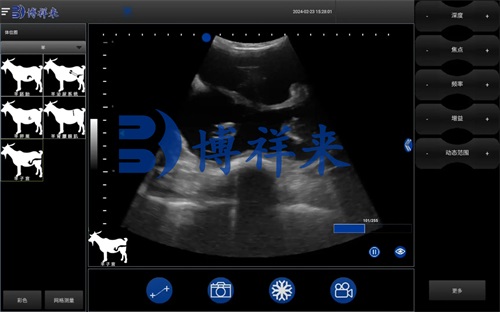
Benefits That Go Beyond Reproduction
While this article focuses on embryo monitoring, it’s worth noting that ultrasound is also useful for:
Diagnosing uterine infections
Monitoring ovarian activity
Detecting abnormalities like mummified fetuses or fluid retention
Even evaluating udder development and mastitis in some cases
This multi-functionality makes it a versatile investment for sheep farmers who want to modernize and expand their operations with smart, animal-friendly tools.
Final Thoughts
Portable ultrasound has become more than just a diagnostic tool—it’s a daily decision-making ally for modern sheep farmers. Whether used for confirming pregnancies, monitoring embryo growth, or preparing for lambing, the technology provides peace of mind and better outcomes for both animals and humans.
Farmers across the globe are discovering that what was once veterinary-only territory is now a practical part of everyday farming life. With tools like the BXL-V50 and growing access to affordable, farm-ready models, the barriers to entry are lower than ever. If you're raising sheep and aiming to improve reproductive success rates, it might be time to pick up a scanner—not just for better numbers, but for better care.
References
Kenyon, P. R., Maloney, S. K., & Blache, D. (2014). Review: Sheep production and sustainability: Recent findings and future perspectives. Animal Production Science.
NSW Department of Primary Industries. (2023). Pregnancy scanning of ewes.
American Sheep Industry Association. (2024). Using ultrasound in sheep reproductive management.

